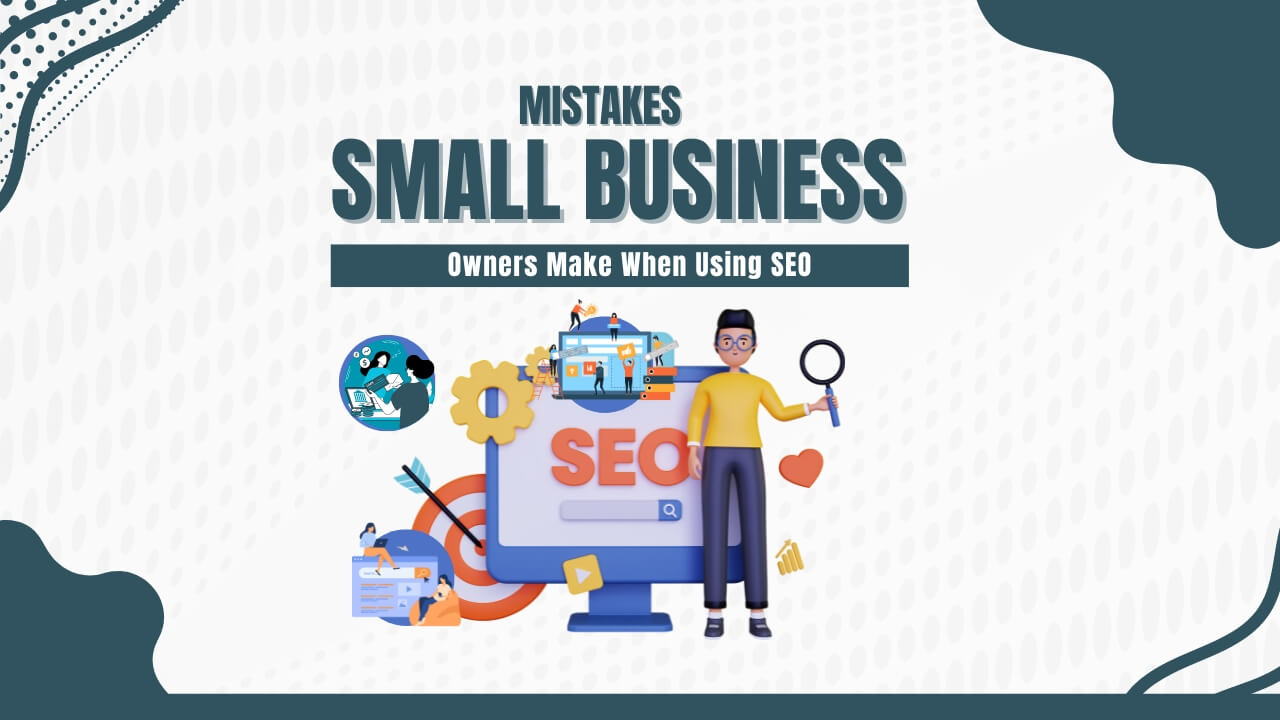In this ever-evolving digital marketing era, advertising platforms like Google Ads and Yahoo Ads are two of the most vital and effective tools for businesses aiming to increase their online presence.
As the internet is getting crowded day by day, digital advertising is getting popular and is also reaching its effective targeted audience, resulting in driving more and more website traffic, and boosting the conversions.
Within this competitive arena, Google Ads and Yahoo Ads both come with the distinct avenues for advertisers to showcase their products and services in an effective way.
But among the both choosing the right platform is really a tough task though, well don’t worry we will help you to choose the best among this both by providing you with each of its unique features, audience reach, and advertising capabilities each provides.
Google Ads, covers a wide range of search engine market share. It not only allows advertisers to appear on the top of the search result pages but also allows them to place their ads on different websites, videos, and apps through its Display Ad Network. This immense reach is ultimately the key of its immense popularity, offering unparalleled visibility that advertisers crave.
On the other hand, Yahoo Ads operates under Verizon Media, presenting a more niche but equally compelling proposition. As you know it may not reach that same level of Google audience base but as you know it is in the veins of the users through its integrated services like Yahoo Mail, Yahoo Finance, and its search engine.
This targeted approach allows advertisers to effectively target their specific set of audience that are more likely to be interested in the brand advertisement.
Well further in this blog we will be looking into the detailed comparison of Google Ads and Yahoo Ads, knowing how effective is their market reach, targeting capability , ad formats, user interface, cost efficiency, and the analytical tools they offer. By evaluating these platforms one by one.
Well the main aim of this blog is to provide the advertisers with the detailed insights which will help the advertisers to make informed decisions that align with their business goals and marketing strategies.
Whether you’re a small business owner or you have just entered in the world of digital advertising for the first time or a seasoned marketer reevaluating your ad spend, This blog will help you to choose the right platform according to your business needs so stay tuned with Sujit Shukla.
Market Reach and Visibility
Google’s unparalleled market share allows Google Ads to have an extensive reach making it one of the popular choices for advertisers who are looking to maximize their reach and audience engagement .
The Google Display Network further broadens their reach, offering access to a wide range of website networks.
Yahoo, although it’s not that dominant in the market, still holds popularity in the digital ecosystem, especially in certain demographics and regions. So it’s very important for marketers to Understand the inside edge of each platform’s market reach and how it affects advertising outcomes. This thing is very important for the marketers to effectively cater their audience.
Google Ads: A Behemoth of Reach
Google as you know is one of the dominant search engines and is well-documented, with a majority of searches being done on a single day.
This dominance also covers Google Ads, which allows advertisers to not only appear in the search result but also to come across the Google Display Network (GDN).
The GDN provides millions of websites, videos, and apps, where ads can be effectively displayed, effectively increasing the visibility of the website.
This extensive reach is very much important for businesses who are mainly aiming to maximize the exposure, offering a broad canvas and to effectively engage with their potential customers across various digital networks.
Yahoo Ads: Targeted Visibility
While Yahoo on the other side cannot scale that much as Google, its advertising platform, Yahoo Ads, offers a specific targeting approach and visibility.
Through its various portfolio of properties, including Yahoo Mail, Yahoo Finance, and its own search engine it effectively reaches a specific set of targeted audience.
This targeted reach is very much beneficial for advertisers who are continuously aiming to reach their targeted audience with specific demographics.
Yahoo’s main strength lies in the ability to offer a more concentrated user base, which can automatically lead higher engagement rates for ads that helps to effectively capture the interest of the audience of that specific platform.
Comparative Analysis
Both Google Ads and Yahoo Ads come with unique strategic objectives. Google Ads is one of the popular choices for advertisers looking to have an extensive reach and visibility across a wide array of internet users.
The ability to place ads across the vast Google ecosystem makes it one of the most powerful tools to achieve widespread brand recognition and to drive substantial traffic.
Yahoo Ads, with its more focused reach, appeals to capture the advertisers over quality and not quantity. Platforms, such as Yahoo Mail and Yahoo Finance, have a specific set of audience, allowing advertisers a chance to engage with their targeted audience. This can be particularly effective for niche marketing campaigns or for businesses whose products and services are aligning with the demographic of Yahoo Ads.
Well at last, the choice between Google Ads and Yahoo Ads in terms of market reach is determined based on the specific goals and target audience for your advertising Campaign.
Advertisers who are actively seeking for a broader exposure will find Google Ads a better option, while those aiming for a targeted set of audience might go with Yahoo Ads.
In the further section we will be effectively setting a stage of a detailed comparison and will be highlighting the distinct market reach and visibility advantages of both Google Ads and Yahoo Ads.
Further, we will be looking more into the targeting capabilities of each of this platform, offering some of the valuable insights about how they effectively enable advertisers to connect with their targeted audience.
Targeting Capabilities
The ability to target the audience precisely is one of the major steps for effective digital advertising. As you guys know both Google Ads and Yahoo Ads come with a wide range of targeting options, allowing advertisers to effectively boost up their campaigns to reach their desired demographics and audience behavior.
However, the sophistication and granularity of targeting capabilities may vary between both these platforms, as per the suitability and the advertising options.
Google Ads: Precision at Scale
Google Ads as you know is mainly known for its advanced targeting options, which takes Google’s extensive data based on the user search intent, interests, and online activities. Some of the Key targeting options are:
- Keyword Targeting: Google Ads, keyword targeting option allows advertisers to showcase their ads to the users who are actively searching by the related terms and keywords.
This specific search intent is highly effective to capture the users at the moment whenever they are considering purchasing that product or when they are looking for it related information.
- Demographic and Location Targeting: Advertisers can also effectively target their audience based on the age, gender, location, and even household income of their audience, enabling them to reach their exact and most relevant audience.
- Interest and Behavior Targeting: By effectively using the users data’ Google accounts and browsing behavior, advertisers can effectively target their ads based on specific interests, their users purchase behavior, and even life events.
- Remarketing: Google Ads also allows remarketing, which allows advertisers to re-target their users who had previously once engaged with the Ads. This is very important to convert the lead and to increase the conversion rate.
Yahoo Ads: Niche Targeting with Integration
Yahoo Ads, as you know while operating on a smaller scale, has precise targeting options that benefit from its integrated services and content verticals. Some of the Key features includes:
- Search-Based Targeting: Similar to Google, Yahoo Ads also allows keyword targeting in the search Ads which they provide, albeit with a smaller but potentially less competitive search volume.
- Audience Targeting: By effectively collecting the data from Yahoo Mail and other Yahoo services, advertisers can easily target their users based on the specific demographic profiles, and even specific email behaviors.
- Location Targeting: Geographic targeting options are also available, which helps advertisers to effectively reach their targeted audience based on the precise location.
- Custom Audience and Lookalike Targeting: Yahoo Ads allows advertisers to also upload their customer list whom they want to target effectively and if needed to exclude the specific users and to find new audiences similar to their existing customers.
Comparative Analysis
The targeting capabilities of Google Ads and Yahoo Ads both have its own advantages depending on the advertisers goals.
Google Ads do have a broad range of targeting options that is beneficial for Google’s massive data of the user behavior and preferences, making it highly versatile for other campaign objectives.
Its remarketing and interest-based targeting capabilities are one of the unique and effective ways through which advertisers are actively look to maximize their conversion.
Conversely, Yahoo Ads always focuses on precise targeting strengthening its demographic and interest-based targeting derived from its proprietary services.
This can be one of the valuable asset for advertisers who are actively looking to engage a specific set of audience who are a close user of Yahoo.
The platform custom audience and lookalike targeting also provide opportunities for accurate and effective targeting.
Well, last but not the least, the choice between Google Ads and Yahoo Ads depends on the advertisers specific needs.
Both platforms come with a specific set of valuable tools for reaching their desired audiences, but the optimal choice should be based on the campaign’s goals, budget, and the specific demographics the advertiser aims to engage.
Ad Formats and Flexibility
The versatility and flexibility of the ad formats are two of the main factors that can significantly impact the effectiveness of the Advertising Campaign. Both Google Ads and Yahoo Ads come with a variety of Ad formats, based on the different advertisers needs and campaign objectives.
Further in the section we will effectively compare the ad formats provided by each platform, focusing mainly on the creativity and flexibilities.
Google Ads: A Wide Array of Choices
Google Ads is mainly known for its wide range of Ad formats, it is mainly designed to suit various advertising needs across search, display, video, and more. Some of the Key ad formats include:
- Search Ads: it is basically a Text-based ads which appear on the Google search results pages. These ads are highly effective and can easily target the users based on their search intent and their purchase information.
- Display Ads: it is mainly Visual ads that appear mainly on the Google display networks, which includes banners, image ads, and rich media ads. Display ads are mainly effective to build brand awareness and precise targeting.
- Shopping Ads:You guys might have seen products that appear mainly in Google Shopping and on search results pages. Shopping ads are ideal for e-commerce retailers, reaching the product ads directly to its potential customers.
- Video Ads: Videos Ads are basically those ads that run on YouTube and across the web. Video ads can be of any type; it can be short clips to longer content, effectively suitable to engage their audience with story telling clips.
- App Ads: App Ads are basically Promotional content for mobile apps, displayed across various google properties and display networks. The main aim of the App Ads is to drive app installations and engagement.
Yahoo Ads: Targeted and Integrated Formats
Yahoo Ads offer a wide range of selection of Ad formats that leverage its media properties and content platforms for targeted advertising. Some of the mainly used formats are:
- Native Ads: This ads effectively blends with the content on Yahoo’s platforms, like Yahoo finance and Yahoo Mail. Native ads are effectively designed to engage users without interrupting their browsing experience.
- Display Ads: Similar to Google, Yahoo ads also provides display advertising options across all its websites and partner networks, which effectively helps to create brand awareness.
- Video Ads: Video advertising helps you to create ads on the Yahoo properties, including Yahoo News and Yahoo Sports, offering a rich medium for storytelling and engagement.
- Carousel Ads: Carousel Ads are basically those ads that allow multiple swiping images on a single ad, and helps the advertisers to showcase a variety of products or different aspects of a single product.
Comparative Analysis
The choice between Google Ads and Yahoo Ads in terms of ad formats depends on the advertisers goals and the nature of the audience they are aiming to capture.
Google Ads offers unmatched versatility with its extensive range of ad formats, covering almost all the digital advertising options.
These uniqueness makes Google Ads a robust platform for advertisers who are actively searching for a comprehensive multichannel advertising options or strategy:
Yahoo Ads, on the other hand, comes with fewer ad formats, providing high-quality, integrated advertising solutions that are highly effective to reach out their targeted audience. The platform’s strength mainly lies in its carousel type of ads, which can be well suited for advertisers to easily capture the attention of their audience.
In summary, advertisers who are continuously looking to cover a broad range and diverse set of creative options, might go with Google Ads for their suitable ad format.
On the other hand, those who are looking to target more and more engagement within its specific range of coverage may go with Yahoo Ads formats that are more appealing. Well among the both choice mainly depends on the campaign’s specific creative requirements, based on the targeted audience, and overall marketing objectives.
Ease of Use and Interface
The user interface has an easy to use option to help the advertisers to effectively create and manage the ad performance.
A platform that comes with a compelling design and comprehensive feature can easily grab the user’s attention, regardless of their experience level, they can effectively achieve their advertising objectives with greater efficiency.
In further sections we will be exploring the user interfaces of Google Ads and Yahoo Ads, comparing their accessibility, account setup processes, and the support resources available to advertisers.
Google Ads: Comprehensive yet Complex
Google Ads comes with robust features, which is primarily designed to cater the advertisers of all sizes whether its small businesses to large enterprises. These platform offers:
- A Detailed Dashboard: The Google Ads dashboard does effectively provide a detailed or you can also say a complete overview of campaign performance, including metrics such as clicks, impressions, conversion rates, and more. While some of the new users may find overwhelming or difficult in using the in depth options as it might be somewhat technical.
- Advanced Campaign Management Tools: Google Ads comes with some advanced tools for creating a campaign, targeting, and optimization. However to master these tools requires effective and continuous learning.
- Extensive Support and Learning Resources: Google as you know has a wealth of resources, including the Google Ads Help Center, online tutorials, and the Google Ads Academy, which can effectively help the new advertisers to take the advantage of the free online courses on the various aspects of the platform.
Yahoo Ads: User-Friendly with Focused Features
Yahoo Ads has a most streamlined interface that is easy of use, making it accessible for advertisers to effectively experience the levels. The platform features:
- Simplified Campaign Setup: Yahoo Ads effectively guides the users through the campaign creation process with an intuitive interface as compared to the Google Ads. This can be somewhat appealing for the new advertisers and also for small businesses.
- Focused Toolset: Although Yahoo Ads provides fewer advanced features than Google Ads, it offers a wide range of features for targeting, ad creation, and performance monitoring, all within a less complex framework.
- Dedicated Support: Yahoo Ads users also have access to the customer support resources to effectively design the ads campaign and to help the advertisers get the most out of their campaigns. While the depth of resources that may not match Google’s, they are well-tailored to the platform’s features.
Comparative Analysis
Choosing between Google Ads and Yahoo Ads from a usability point of view mainly depends on how the advertisers are using and are experiencing their effective features.
Google Ads no doubt is the most powerful platform which offers a unparalleled granularity and control over campaigns.
However, its complex setup and variety of options can be really tough for beginners to easily capture and understand how to use it effectively.
But on the other side, Yahoo Ads offers a more user-friendly experience, as it comes with a straightforward interface and endless features to effectively run and manage the ads campaigns without the steep learning curve associated with more complex platforms.
For small businesses or advertisers which have a limited digital marketing experience and limited knowledge about the online market, Yahoo Ads will be a more preferable choice for the entry point into online advertising.
Meanwhile, for larger businesses and for those who have a dedicated marketing team may find Google Ads as a more advanced option which will be more suited according to their needs, despite its more complex interface.
Last but not the least, the choice between Google Ads and Yahoo Ads in terms of use and effective interface depends on the advertisers comfort level with digital advertising platforms and their specific requirements for campaign management and optimization capabilities.
Cost and Budget Management
Cost efficiency and budget allocation are two of the most vital factors to be considered by the advertisers when choosing an effective digital advertising platform.
Both Google Ads and Yahoo Ads have different pricing models and tools to effectively help the advertisers to control their spending maximizing their return of investment.
Further in the section we will be exploring the cost structures, average costs, and budget management features of both platforms, by providing the valuable insights of how advertisers can effectively allocate their budget.
Google Ads: Flexible Pricing with Competitive Bidding
As you know Google Ads mainly operates on a competitive bidding system, where advertisers can easily choose from different pricing models according to their budget:
- Cost-Per-Click (CPC): Advertisers have to pay whenever a user clicks on their ad. CPC is ideal for driving more and more traffic into the website.
- Cost-Per-Impression (CPM): Payment is mainly based on the number of impressions (views) of an ad, which is effectively suitable to create brand awareness campaigns.
- Cost-Per-Action (CPA): Advertisers also have to pay whenever a user takes an action, like sales or sign-ups, making it a good option for conversion focused campaigns.
The cost of advertising on Google ads mainly depended on various factors such as industry, competition, and the quality of the ad campaigns. Google Ads also provides some of the effective tools for the budget management, allowing advertisers to set the budget and bid.
Yahoo Ads: Cost-Effective Targeting with Fixed Pricing Options
Yahoo Ads also comes with a variety of ad formats, but it generally has a lower average costs as compared to the Google Ads, making it one of the suitable option for businesses with smaller advertising budgets:
- CPC: Similar to Google Ads, Yahoo Ads allows advertisers to pay per click, with generally lower CPC rates as it has less competition.
- CPM: Similar to Google Ads, Yahoo Ads also offers display and video ads, offering cost-effective options for brand visibility.
- Fixed Price: There are Certain ad placements and formats which have a fixed pricing, providing predictable costs for specific advertising efforts.
Yahoo Ads also has a budget management tool, enabling advertisers to set daily and monthly budgets. The platform’s lower average cost is very much suitable for small to medium-sized businesses and for those which has effectively less competition.
Comparative Analysis
When effectively comparing the cost and the budget management capabilities of Google Ads and Yahoo Ads, there are several factors which you have to look upon.
Google Ads has a competitive bidding environment and offers a vast reach that can lead to higher costs, particularly in the competitive industries. However, its advanced targeting and optimization tools will help the advertisers to easily get the ROI.
On the other hand, Yahoo Ads offers a cost-effective entry point into digital advertising, with lower average costs and fixed pricing options for various sets of Ad formats.
Although the reach and targeting capabilities may not reach like the Google Ads yet it can give the advertisers the higher ROI with well-defined target audiences, particularly within Yahoo’s ecosystem.
Ultimately, the choice between Google and Yahoo Ads from a cost perspective should be considered based on the advertisers budget, campaign goals, and the potential ROI.
Advertisers should always keep an eye on the competitiveness of their own industry and the specific audiences they are aiming to reach when allocating the budget between these platforms.
Analytics and Reporting
Effective analytics and reporting capabilities are very much essential for advertisers to monitor their campaign and also to effectively understand their audience’s behavior, to effectively optimize their strategies for better outcomes.
Both Google Ads and Yahoo Ads offer a wide range of analytics tools, but the depth, usability, and integration options of these features may vary significantly between platform to platform. Further in the section we will be exploring how each platform supports advertisers in measuring and analyzing their advertising campaign.
Google Ads: Comprehensive Analytics and Integration
Google Ads is mainly known for its robust analytics and reporting features, providing detailed insights into campaign performance. Some of the Key aspects include:
- Real-Time Reporting: Google Ads provide real-time performance data, allowing advertisers to effectively adjust their campaigns based on the current trends.
- Advanced Metrics: Advertisers can also easily access a wide range of metrics, including click-through rate (CTR), conversion rate, cost per acquisition (CPA), and return on ad spend (ROAS), among others.This effective wealth of data helps you to know about your campaign performance.
- Integration with Google Analytics: One of the most effective advantages is the seamless integration with Google Analytics, enabling advertisers to effectively track the user behavior on their websites post-click.
This integration provides a detailed view of their customer journey , from ad exposure to post-click engagement and conversion. - Customization and Automation: Google Ads provides custom report creation and automation, enabling advertisers to effectively tailor the analytics based on the specific needs and to receive regular updates without manual intervention.
Yahoo Ads: Targeted Insights with Simplicity
Yahoo Ads provides a more streamlined approach to analytics and reporting, focusing on ease of use and clarity:
- User-Friendly Dashboards: Yahoo Ads offers intuitive dashboards that present key performance indicators (KPIs) in an easily digestible format, which is suitable for advertisers who prefer straightforward analytics.
- Essential Metrics: While offering a narrower range of metrics as compared to Google Ads, Yahoo Ads covers all the essentials, such as CTR, impressions, clicks, and conversions, providing effective data for the campaign management.
- Yahoo Analytics: Yahoo Ads integrated with its own analytics tools, offering valuable insights of the audience behavior and ad performance within the Yahoo ecosystem. However, the depth of analysis and integration is not that expensive as compared to the Google Ads.
- Reporting Features: Advertisers can easily generate reports to track their campaign performance of their Ads overtime, though the customization options which are comparatively more limited as Google Ads.
Comparative Analysis
The analytics and reporting capabilities of both Google Ads and Yahoo Ads cater to different needs and preferences.
Google Ads helps advertisers who need detailed, real-time data and comprehensive insights into the customer journey, both pre-and post-click.
Its advanced metrics and integration with Google Analytics make it one of the powerful tools for making data driven decisions.
Conversely, Yahoo Ads offers a more accessible approach to analytics, it is ideal for advertisers who are looking for simplicity and clarity without the need of extensive data analytics.
Its user-friendly interface and essential metrics provide a solid foundation for campaign tracking and optimization, especially for small to medium-sized businesses or those with straightforward advertising goals.
Well in deciding between the Google Ads and Yahoo Ads for analytics and reporting, advertisers should also consider their comfort level, the complexity of their campaigns, and the importance of integrating ad performance data with broader website analytics.
Google Ads is an effective choice for in depth analysis and integration, while Yahoo Ads offers simplicity and ease of use for advertisers who prioritize straightforward reporting and essential insights.
Industries Best Served
When selecting between Google Ads and Yahoo Ads, understanding the industries and types of businesses will help advertisers to guide through a valuable direction.The decision should be based on the platform’s strengths, audience demographics, and the specific goals of the advertising campaign. This section mainly outlines the industries and business types that effectively benefit the most by advertising on Google Ads and Yahoo Ads, respectively.
Google Ads: Versatility Across Industries
Google Ads’ extensive reach and sophisticated targeting options make it a versatile choice suitable for almost any industry. Its ability to cater to a wide range of advertising needs, from lead generation to brand awareness and e-commerce sales, allows businesses in diverse sectors to benefit. Key industries include:
- E-commerce: The Shopping ads and dynamic remarketing capabilities of Google Ads are particularly effective for online retailers looking to drive sales and promote their products.
- Local Services: With its advanced location targeting and local search ads, Google Ads is ideal for businesses aiming to attract local customers, such as restaurants, auto repair shops, and healthcare providers.
- B2B Services: Google Ads supports B2B companies in generating leads and building brand visibility through targeted search and display campaigns.
- Travel and Hospitality: Customized ad formats and audience targeting enable travel companies and hotels to reach potential travelers with tailored offers and information.
- Education and Training: Institutions and online course providers can leverage Google Ads to reach prospective students with specific interests and educational goals.
Yahoo Ads: Niche Markets and Targeted Audiences
Yahoo Ads’ strength lies in its ability to connect advertisers with specific audience segments within its ecosystem, making it a compelling choice for industries and businesses targeting niche markets or specific demographics. Suitable industries include:
- Financial Services: Yahoo Finance provides a targeted environment for financial institutions and services to reach engaged audiences interested in financial content.
- Entertainment and Media: With properties like Yahoo Entertainment, the platform is well-suited for promoting movies, TV shows, music, and events to entertainment-seeking audiences.
- Automotive: Yahoo Autos offers a dedicated space for automotive advertisers to connect with potential car buyers and enthusiasts.
- Retail and Consumer Goods: Yahoo’s native ads and integrated shopping experiences can help retailers and consumer brands reach audiences interested in shopping and lifestyle content.
- Technology and Telecommunications: Companies in the tech sector can benefit from Yahoo’s ability to target tech-savvy users and those interested in technology and gadgets.
Comparative Analysis
The choice between Google Ads and Yahoo Ads often comes down to the advertiser’s specific industry, target audience, and campaign objectives. Google Ads’ broad reach and advanced targeting capabilities make it a universal tool that can serve a wide array of industries effectively.
Its flexibility and depth of features support diverse advertising strategies, from driving immediate sales to building long-term brand equity.
Conversely, Yahoo Ads offers a strategic advantage for advertisers aiming to engage with particular demographics or interests within Yahoo’s ecosystem. Its targeted ad formats and environments are particularly effective for industries that align closely with Yahoo’s content verticals and audience segments.
Conclusion
In conclusion, advertisers should consider the unique characteristics and strengths of each platform in relation to their industry and target market. By aligning platform selection with industry-specific advertising goals, businesses can optimize their digital advertising efforts for better engagement, higher conversions, and improved ROI.
This comprehensive analysis of Google Ads versus Yahoo Ads across various dimensions—market reach, targeting capabilities, ad formats, ease of use, cost, analytics and reporting, and industries best served—provides advertisers with a detailed overview to inform their platform choice.
Whether prioritizing broad reach and flexibility with Google Ads or targeting specific audience segments within Yahoo’s ecosystem, advertisers can leverage the strengths of each platform to achieve their marketing objectives effectively.






